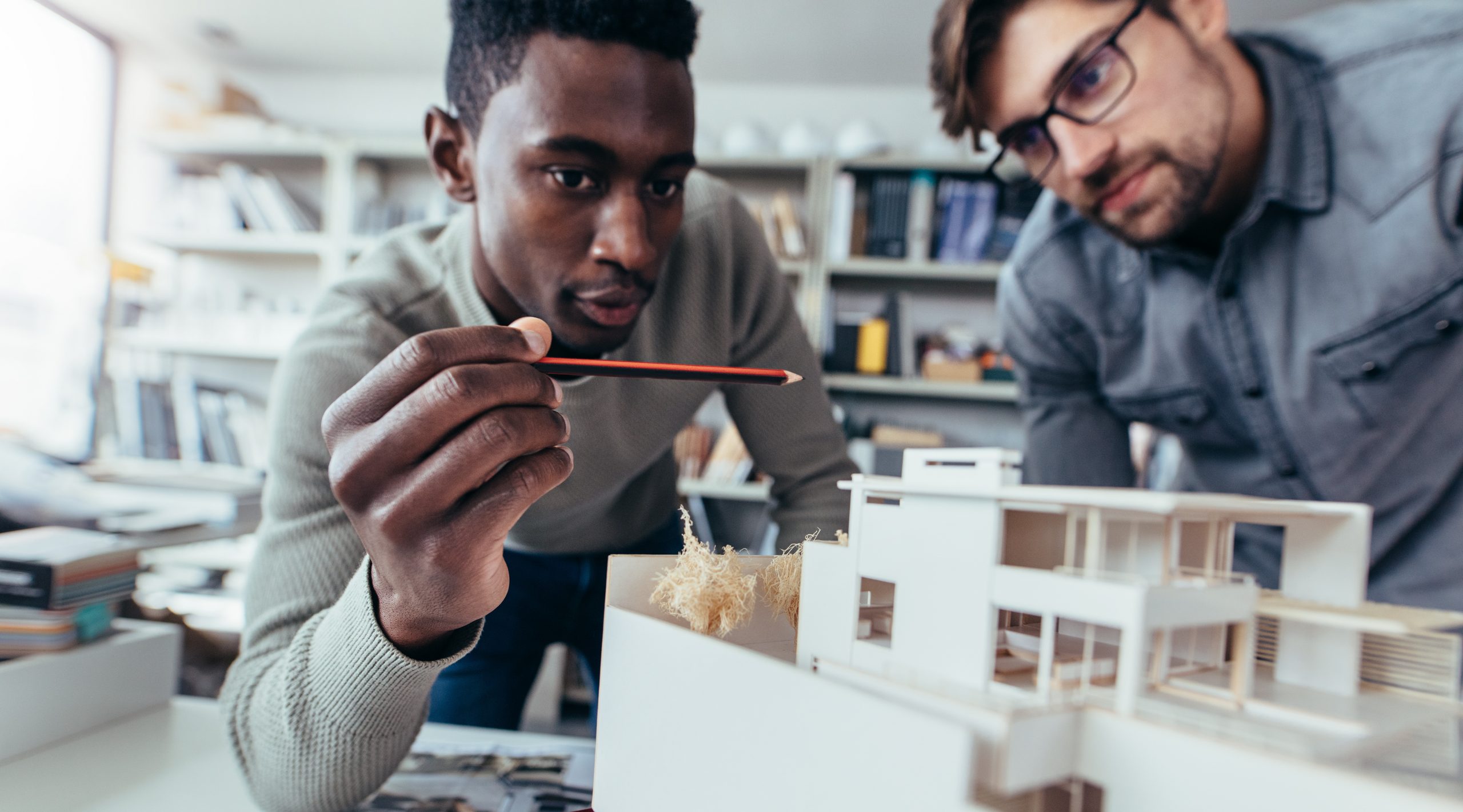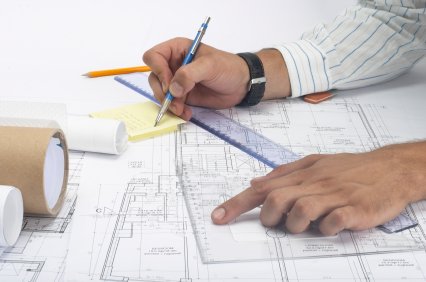Architect Workflow Enhancement for Faster Project Delivery
Architect Workflow Enhancement for Faster Project Delivery
Blog Article
Comprehending the Diverse Job Paths Available for Aspiring Architect
As an ambitious Architect, you have a world of profession courses waiting on you. Each path supplies special challenges and opportunities to apply your creativity and technical expertise. Whether you're drawn to standard design or the nuances of sustainable style, there's a niche that straightens with your rate of interests. Understanding these varied alternatives can form your expert journey, yet which instructions will you pick to check out first?
Traditional Style: Designing Structures and buildings
Standard architecture concentrates on creating buildings and structures that mix capability with visual allure. Your layouts can reflect cultural heritage, showcasing regional traditions while satisfying contemporary needs.
You'll establish skills in preparing, model-making, and site evaluation, enabling you to imagine and communicate your concepts successfully. Involving with clients, you'll need to recognize their vision and convert it into possible designs.
In addition, developing codes and sustainability techniques are crucial in your work, ensuring your structures are secure and eco friendly. As you expand in your profession, you'll locate possibilities in residential, business, and even remediation projects, each offering unique difficulties. Embracing standard design leads the way for a fulfilling job that admires the past while forming the future.
Urban Planning: Forming Communities and Public Spaces
As an aspiring Architect, you can play a crucial function as a metropolitan organizer, transforming how neighborhoods work and communicate. By employing community engagement methods, you'll assure that locals have a voice fit their environment. Plus, integrating lasting layout principles will certainly assist produce areas that not only fulfill today's needs however likewise shield the future.
Role of Urban Planners
While lots of may consider designers as the single visionaries behind structures, urban coordinators play a vital role in forming the wider landscape of communities and public areas. They assess land usage, zoning regulations, and area needs to create sustainable settings that enhance quality of life. By teaming up with numerous stakeholders, you'll help design parks, transport systems, and houses that promote social interaction and availability. Urban planners additionally concentrate on environmental factors to consider, ensuring that developments incorporate green rooms and assistance biodiversity. Your proficiency in spatial layout and area characteristics permits you to picture future growth while protecting cultural heritage. In this vital function, you'll directly influence exactly how individuals experience their surroundings, making every task a possibility for positive adjustment.
Area Interaction Approaches
Efficient community involvement methods are important for city coordinators to assure that the voices of homeowners are heard and valued in the planning procedure. To promote purposeful discussion, you ought to prioritize open discussion forums and workshops where neighborhood participants can reveal their ideas and worries. By actively including and listening comments, you'll create spaces that reflect the area's requirements, ultimately leading to even more lasting and effective metropolitan environments.
Lasting Layout Principles
When making metropolitan areas, incorporating lasting style principles is crucial for developing settings that thrive both environmentally and socially. Consider incorporating environment-friendly spaces, like yards and parks, to enhance biodiversity and enhance air high quality.
Creating with water preservation in mind is likewise vital-- consider rain gardens and absorptive surface areas to handle stormwater. Entailing community members throughout the planning process assurances that the rooms you produce satisfy their requirements and encourage social communication. By welcoming these principles, you'll add to vivid, sustainable metropolitan landscapes that benefit everyone.

Landscape Architecture: Creating Lasting Outside Settings
As you discover landscape design, you'll discover important design concepts that create functional and attractive exterior rooms. Sustainable methods play a vital function in guaranteeing these settings thrive while reducing ecological influence. And also, you'll find a variety of career possibilities that allow you to make a real distinction in just how individuals interact with nature.
Design Principles in Landscape
Understanding layout principles in landscape design is important for producing sustainable outside atmospheres that harmonize with nature. You'll require to consider aspects like range, balance, and proportion to ensure your designs feel natural and welcoming. Furthermore, pay focus to seasonal modifications, developing with products that complement the environments year-round.
Lasting Practices Summary
Sustainable practices in landscape style not only concentrate on aesthetics but also prioritize eco-friendly health and wellness and source conservation. You can create rooms that advertise soil wellness, such as making use of natural materials and practicing permaculture principles. Ultimately, these methods guarantee your layouts profit both people and the environment for years to come.
Profession Opportunities Expedition
With a strong structure in sustainable practices, landscape architecture uses a range of profession courses that permit you to make a meaningful effect on the atmosphere. You might function as a landscape developer, developing visually pleasing and functional outdoor areas, or concentrate on eco-friendly restoration, aiding to revitalize broken environments. Urban planners usually team up with landscape designers to develop green rooms in urban settings, boosting city livability. If you're passionate regarding education and learning, take into consideration coming to be a landscape design teacher, inspiring future generations. In addition, you might function with nonprofits concentrated on ecological sustainability or engage in research study to innovate brand-new methods. Each path not just forms attractive atmospheres yet likewise cultivates a much healthier world for future generations.
Sustainable Style: Concentrating On Eco-Friendly Practices
As you discover your profession in design, accepting green practices can set you apart in a competitive area. Sustainable style focuses on developing structures that lessen ecological effect while boosting resident wellness. By integrating eco-friendly products, energy-efficient systems, and sustainable building techniques, you'll add to a greener future.
Start by gaining expertise of eco-friendly certifications like LEED or BREEAM, which can bolster your credentials. Think about how all-natural light, air flow, and thermal performance can optimize layout. Work together with engineers and ecological specialists to introduce options that minimize waste and preserve resources.
Don't forget the relevance of neighborhood participation-- interesting regional stakeholders can influence styles that integrate with the environment. As clients significantly prioritize sustainability, your competence in environmentally friendly techniques will not only attract projects however also meet your enthusiasm for accountable design. Welcome this important aspect of the occupation, and view your profession prosper.
Historical Preservation: Shielding and Recovering Cultural Heritage
While you commence on your architectural journey, think about the essential duty of historic preservation in keeping our social heritage. This area focuses on the protection and reconstruction of significant structures, sites, and structures that inform the tales of our past. By participating in historic conservation, you'll aid protect the building legacy that shapes neighborhood identification.
As a historic preservation Architect, you'll assess historic value published here and evaluate the problem of structures. You'll function very closely with guardians and chroniclers to guarantee genuine restoration strategies are employed. This job course permits you to blend creative thinking with research study, enabling you to develop options that appreciate initial materials and craftsmanship.
Your job not just contributes to sustainability by reusing existing buildings but also fosters a feeling of satisfaction within areas. Welcoming this path will certainly assist you end up being a guardian of background, protecting the tales and aesthetics that enhance our lives.
Inside Design: Enhancing Indoor Spaces
Historic preservation and indoor style both share a commitment to boosting the developed atmosphere, however they concentrate on different facets. While historical conservation stresses keeping a framework's social and historic worth, indoor architecture nos in on maximizing indoor areas for capability and looks.
As an ambitious Architect, you'll discover that interior design permits you to mix creativity with technical skills. You'll create areas that try this out not only look good however additionally advertise convenience and performance. This field entails recognizing how light, color, and products engage within an area, impacting mood and functionality.
You'll work on numerous projects, from household homes to business workplaces, ensuring that each atmosphere satisfies the needs of its passengers. By focusing on individual experience, you can change insides right into practical and inspiring spaces, making a significant influence on exactly how individuals interact with their surroundings. Accept the chance to enhance interior settings and form the means individuals live and work.
Industrial Style: Combining Functionality With Aesthetic Appeals
Commercial style plays an important function in producing products that effortlessly mix aesthetic appeals with performance, making sure that what you utilize day-to-day is not just aesthetically appealing yet additionally practical. As an aspiring Architect, you could involve on your own in this area, concentrating on designing everything from furnishings to customer electronic devices. Your job involves recognizing customer requirements, materials, and manufacturing procedures, enabling you to produce ingenious options that improve daily experiences.
In industrial design, you'll typically collaborate with suppliers, marketing professionals, and engineers, ensuring that your layouts are not only stunning but also possible. You'll discover to balance kind and feature, focusing on usability without giving up design. By refining your skills in mapping out, 3D modeling, and prototyping, you'll be well-equipped to bring your ideas to life. This job course provides a vibrant setting where creativity fulfills practicality, making it a gratifying choice for designers curious about forming the items of tomorrow.
Frequently Asked Questions
What Educational Qualifications Do I Required to Become a Designer?
To end up being an architect, you'll need a specialist level in style, usually a Bachelor's or Master's. In addition, you'll have to finish an internship and pass the Architect Registration Assessment to exercise legitimately.
Are There Accreditation Requirements for Different Building Profession Paths?
Yes, there're accreditation demands for numerous building paths. Architect. You'll need to pass tests, total internships, and sometimes go after specialized training, relying on your selected emphasis, like landscape design, metropolitan layout, or historic conservation
What Software Application Abilities Are Vital for Engineers Today?

Just How Can I Gain Practical Experience While Examining Design?
You can get useful review experience by interning at building companies, getting involved in design competitions, volunteering for community projects, or working together with classmates on real-world tasks. These opportunities improve your skills and develop important links in the industry.
What Task Opportunities Exist Outside Traditional Architecture Firms?
You can discover different task possibilities outside standard architecture companies, like metropolitan preparation, indoor layout, landscape design, building and construction management, property development, and even duties in sustainability consulting. Each offers one-of-a-kind difficulties and incentives.
Whether you're drawn to standard style or the nuances of sustainable style, there's a specific niche that lines up with your interests.When designing city spaces, integrating lasting layout concepts is important for developing environments that prosper both environmentally and socially.As you discover landscape style, you'll uncover necessary layout concepts that create functional and lovely exterior areas.Comprehending style principles in landscape design is crucial for creating lasting outdoor settings that integrate with nature.In commercial design, you'll frequently team up with designers, online marketers, and suppliers, guaranteeing that your styles are not only beautiful but likewise practical.
Report this page